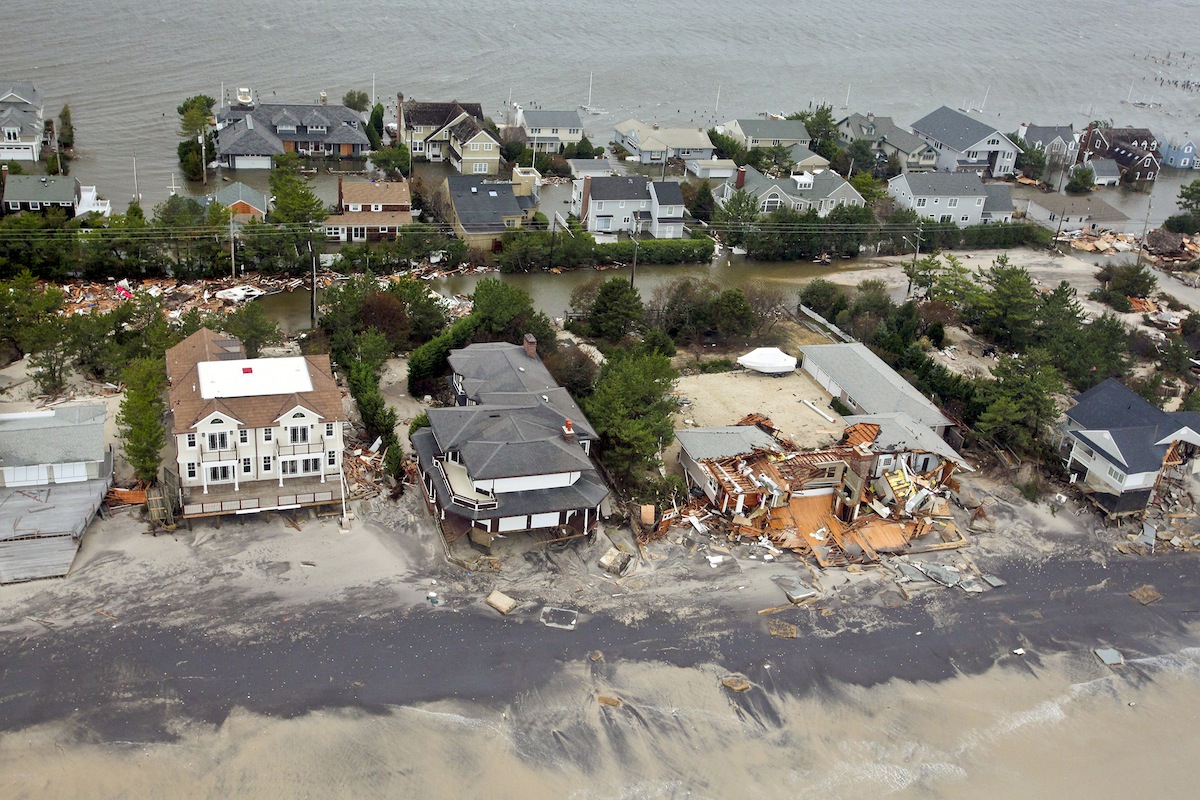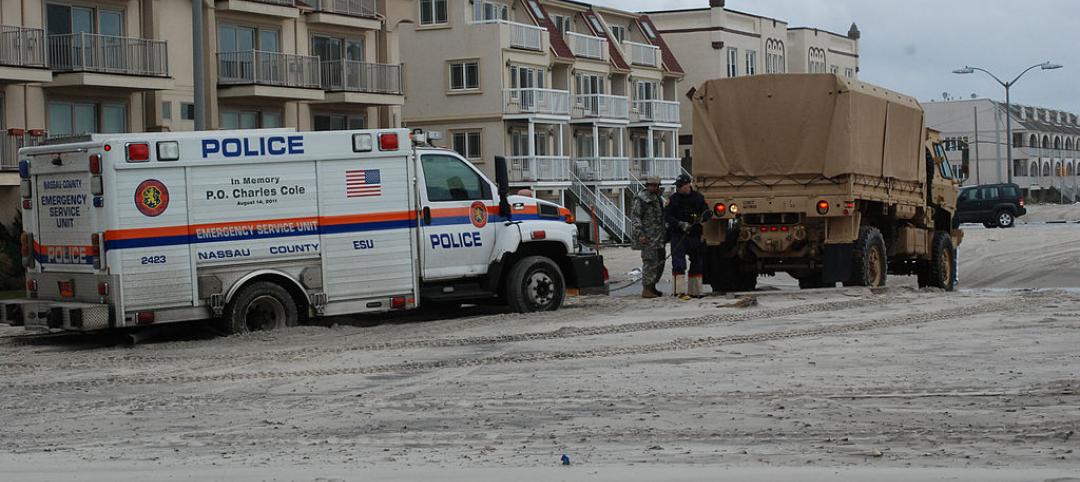The U.S. Commerce Department's National Institute of Standards and Technology (NIST) issued a draft guide to help communities plan for and act to keep windstorms, floods, earthquakes, sea-level rise, industrial mishaps, and other hazards from inflicting disastrous consequences.
NIST is requesting public feedback on the draft "Community Resilience Planning Guide for Buildings and Infrastructure." The official first version of the guide will be released this fall and updated periodically as new building standards and research results become available, and as communities gain experience using the guide and recommend improvements.
The guide aims to bring community resilience into practice with input from stakeholders in order to make the guide and effective tool for helping communities to bounce back quickly and efficiently after natural and human-caused disasters.
According to data collected by the Commerce Department's National Oceanic and Atmospheric Administration (NOAA), over the last four years, the nation experienced 42 extreme weather events that caused at least $1 billion in damage, for a total cost of about $227 billion and 1,286 lives lost. In all, there were 334 major disaster declarations in the United States between 2010 and 2014.
According to a separate tally by the Center for Research on the Epidemiology of Disasters in Belgium, the United States experienced about 500 natural disasters between 1994 and 2013, ranking second globally, behind China. The 10 deadliest of these U.S. disasters killed more than 4,000 people.
"Resilience planning is not a stand-alone activity," said NIST structural engineer Therese McAllister, who led development of the planning guide. "The guide recommends that communities integrate their resilience plans into economic development as well as zoning and other local planning activities that impact buildings, public utilities and other infrastructure systems that residents rely on for important services."
The guide lays out a six-step process that starts with the formation of a resilience team drawn from the community and culminates with the development and implementation of resilience strategies that are updated regularly. The resilience team's role is to engage community representatives in a series of efforts that include defining how vital social functions like healthcare, education and public safety are supported by local buildings and infrastructure systems, such as power, water, and transportation.
This information helps to address a critical question: When do buildings and infrastructure systems that support social functions need to be restored so that recovery is not deferred and the community's longer-term ability to serve local residents does not deteriorate?
 Image: NIST
Image: NIST
The guide is an important addition to the National Preparedness System, which provides a way to organize preparedness activities and programs. Nearly 24,000 U.S. communities have developed mitigation plans that aim to reduce the risk of damage from a hazard, according to the Federal Emergency Management Agency (FEMA). Effective mitigation measures will, for example, protect a building from flooding, but factoring in resilience will help to ensure that the structure also has power and water during recovery.
The draft guide consists of two volumes. The first provides an overview of community resilience and summarizes the six steps involved in developing and implementing a resilience plan. It also provides an example of how a fictional community uses the framework to plan and guide resilience efforts.
The second volume serves as a detailed resource to support the six steps. It includes comprehensive sections on characterization of social and economic functions, buildings, transportation, energy, communication, water and wastewater and community resilience metrics.
NIST led the development of the draft guide, convening four regional meetings to gather stakeholder input. It engaged nine outside experts in disciplines ranging from buildings to public utilities and from earthquake engineering to sociology to assist in drafting the guide. NIST also drew on its own expertise, developed through its detailed studies of more than 50 disasters and building failures, including the collapse of the World Trade Center buildings and the 2011 Joplin, Mo., and Moore, Okla., tornadoes. NIST expertise also comes from ongoing research to improve the structural performance of buildings and technical contributions to the development of building standards and codes by other organizations. NIST has no regulatory authority.
The 60-day public review of the draft Community Resilience Planning Guide for Buildings and Infrastructure has been announced in the Federal Register. The public comment period ends June 26. For more information on NIST's Community Disaster Resilience Program, visit the NIST website.
Related Stories
Smart Buildings | Oct 30, 2014
Energy Department pledges $9 million for energy efficiency improvements on commercial buildings
The U.S. Dept. of Energy will spend $9 million to encourage investments in energy-saving technologies that can be tested and deployed in offices, shops, restaurants, hospitals, hotels and other types of commercial buildings.
Smart Buildings | Oct 29, 2014
SCAPE’s 'living breakwaters' resiliency development wins 2014 Buckminster Fuller Challenge
New York-based landscape architecture firm SCAPE won the Buckminster Fuller Institute’s 2014 Fuller Challenge, billed as socially responsible design’s highest award.
Smart Buildings | Jun 8, 2014
Big Data: How one city took control of its facility assets with data
Over the past few years, Buffalo has developed a cutting-edge facility management program to ensure it's utilizing its facilities and operations as efficiently, effectively, and sustainably as possible.
Smart Buildings | May 19, 2014
New York should forget about surge barriers for most cost-effective resiliency plan, say researchers
Massive storm surge barriers would be too costly for the potential benefit to protect New York City from violent storms like Hurricane Sandy, researchers say.
Smart Buildings | Apr 28, 2014
Cities Alive: Arup report examines latest trends in urban green spaces
From vertical farming to glowing trees (yes, glowing trees), Arup engineers imagine the future of green infrastructure in cities across the world.
Smart Buildings | Jan 7, 2014
9 mega redevelopments poised to transform the urban landscape
Slowed by the recession—and often by protracted negotiations—some big redevelopment plans are now moving ahead. Here’s a sampling of nine major mixed-use projects throughout the country.
Smart Buildings | Sep 13, 2013
Chicago latest U.S. city to mandate building energy benchmarking
The Windy City is the latest U.S. city to enact legislation that mandates building energy benchmarking and disclosure for owners of large commercial and residential buildings.
Smart Buildings | Feb 14, 2013
Minneapolis joins energy benchmarking trend for commercial buildings
Minneapolis is the latest major metro to require large commercial buildings to benchmark and disclose their energy and water use.













